Thanks to Ian McLeod of Fraseropolis.com for guiding our ride today and sharing interesting facts about Hammond, and thanks to Leanne Koehn and James Rowley for the hospitality, the muffins and ice tea, and thank heavens we had a gorgeous sunny day! Here is
Ian's blog post about the ride.
Ian gave us a bit of a history lesson today. It's hard to imagine now that the area just west of Memorial Peace Park once used to be pastures and orchards. The land owned by Japanese was seized from them during the 2nd World War. They were sent to the Kootenays, and few of them returned. They were never compensated. The building where the CEED Centre is now located used to be a Japanese school.
 |
| Start of the ride at the Blue Fountains at Memorial Peace Park |
In Pitt Meadows, we rode the off-road multi-use path between Hammond and the Airport Parkway, and Ian, who was involved in the Golden Ears Bridge construction as public relations manager, told us that for this $1 billion project, this stretch of multi-use path was actually the most contentious of all the issues that they had to deal with. Residents whose houses this path backed onto were upset, claiming that cyclists would climb their fences and steal things out of their backyards. I know they've been complaining about flooding issues after the path was built, supposedly caused by the path, but I hope that they now see the benefits to the community as well and that most cyclists aren't such bad people after all.
While enjoying some delicious coffee at Stomping Grounds Coffee in Osprey Village in Pitt Meadows, Ian told us about the unusual government model of Barnston Island. Its 100 inhabitants are represented by a Director on the Metro Board and pay property taxes to the region, not to their own municipality. It's a great place to go for a bike ride. There's a free ferry from Surrey, from the bottom of 176 Street, and there's very little traffic on the road that goes around the island.
 |
| Great bike racks at Stomping Grounds Coffee were well used |
 |
| Nice latte and great company at Stomping Grounds in Osprey Village! |
We passed through the Katzie reserve. For cyclists the dirt road full of potholes is a convenient, but bumpy connection between Hammond and Osprey. The Katzie presently have only about 500 band members, and this is one of 5 reserves in the area that they own.
Wharf Street still has some industry, but it's obviously struggling. The Hammond Cedar Mill, once the biggest employer in Maple Ridge, has downsized considerably. There is no public access to the Fraser River in Hammond, and
Hammond Neighbours would love to see some of the properties that are up for sale right along the waterfront to be turned into a park.
Riding through Hammond, we stopped at some of the older homes, like the original home of one of the Hammond brothers, who owned much of the land in the area and negotiated with the CPR to have a train station built in Hammond in 1883. Rail or boat was the only access to Hammond in the very early days. It would have been a very different kind of community back then. People would have walked or biked down to the store to buy what they needed. Most people of course worked locally at the Mill, or at the supporting local businesses.
Most of the older homes were built for mill workers. They're generally small homes and these days there's not much buyers' interest in them. Some have been remarkably well-kept though, and it's encouraging to see that there's a strong desire among the Hammond Neighbours to revive some community spirit and to fix up the whole area. It'll be interesting to see what's going to happen in the next few years in this area. It's got so much potential.
 |
| Tolmie Park in Hammond, named after a former BC premier |
 |
| I thought the signs were kind of cute (it's a bit hard to read: "Hippies use side door" and "Beware: pickpockets and loose women"). This is an old telecommunications building beside the old Bank of Montreal |
 |
| The old bank building, the first in Maple Ridge. |
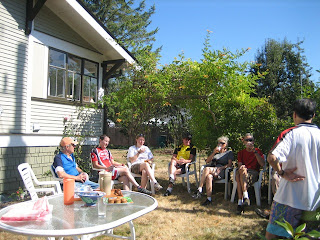 |
| Ice tea and muffins in Leanne and James' garden! |
 |
| Leanne's home, built by her grandfather, and in the process of being restored and renovated. This is where Leanne's parents were Maple Ridge's recycling pioneers! |
 |
Another one of the older homes that makes this neighbourhood in Hammond so appealing.
|


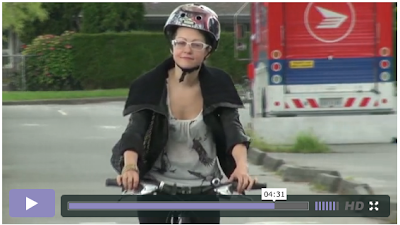







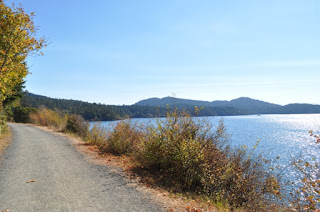

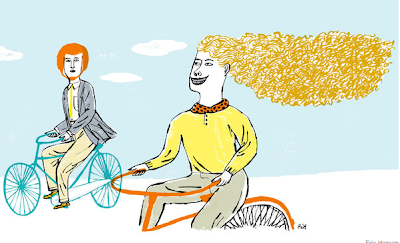

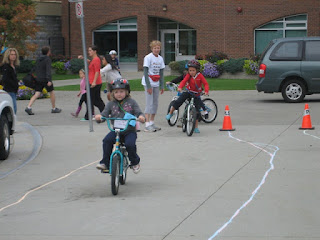


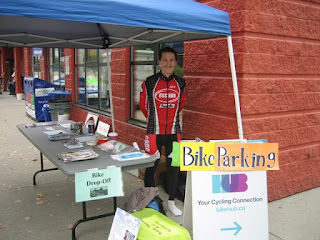

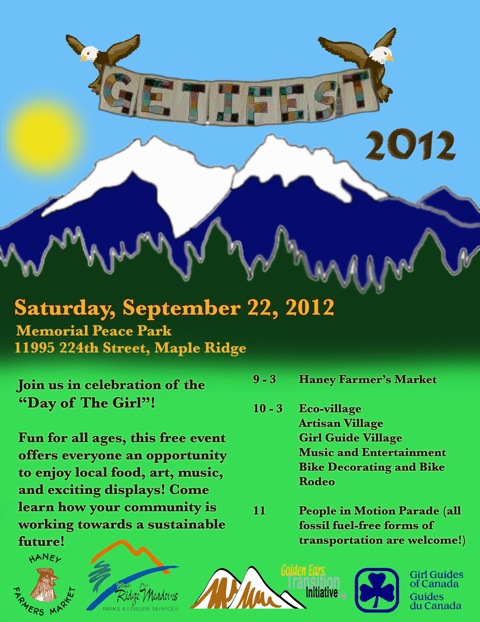
 If you think cycling has nothing to do with women's emancipation, think again. In the late 19th and early 20th century, cycling has done a lot to give women more freedom and make them more independent. Here's a quote from women's rights activist Susan B. Anthony (1820-1906):"Let me tell you what I think of bicycling. I think it has done more to emancipate women than anything else in the world. It gives women a feeling of freedom and self-reliance. I stand and rejoice every time I see a woman ride by on a wheel…the picture of free, untrammeled womanhood.”
If you think cycling has nothing to do with women's emancipation, think again. In the late 19th and early 20th century, cycling has done a lot to give women more freedom and make them more independent. Here's a quote from women's rights activist Susan B. Anthony (1820-1906):"Let me tell you what I think of bicycling. I think it has done more to emancipate women than anything else in the world. It gives women a feeling of freedom and self-reliance. I stand and rejoice every time I see a woman ride by on a wheel…the picture of free, untrammeled womanhood.”  Presently, only about 25% of cyclists in North America are female. The "cycling infrastructure" that has been built here since mid last century or so has consisted of at the most some white lines and bike symbols on our roads, and it obviously hasn't appealed very much to most women, who generally are not looking for the adrenaline rush that you feel when competing with cars for space on the road. Most women prefer a more peaceful experience, away from car traffic. In countries where cycling is perceived to be safer, such as in the Netherlands, the number of women who bike is much higher. In the Netherlands about 55% of cyclists are women. Many of them own a car, but choose to use their bikes, because it's an enjoyable, convenient, fun and healthy way to get around.
Presently, only about 25% of cyclists in North America are female. The "cycling infrastructure" that has been built here since mid last century or so has consisted of at the most some white lines and bike symbols on our roads, and it obviously hasn't appealed very much to most women, who generally are not looking for the adrenaline rush that you feel when competing with cars for space on the road. Most women prefer a more peaceful experience, away from car traffic. In countries where cycling is perceived to be safer, such as in the Netherlands, the number of women who bike is much higher. In the Netherlands about 55% of cyclists are women. Many of them own a car, but choose to use their bikes, because it's an enjoyable, convenient, fun and healthy way to get around.








